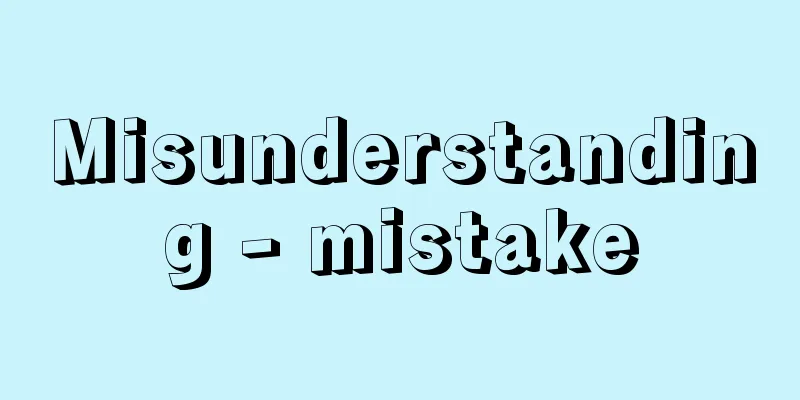Misunderstanding - mistake

|
...A single criminal law that cracked down on minor crimes in the early Meiji period. The first was the Tokyo Criminal Offenses and Misdemeanors Ordinance, which was enacted on November 8, 1872 (Meiji 5) by Tokyo prefectural government ordinance and came into effect on the 13th of the same month. This ordinance was enacted based on the Gonin Gumi Law and various prohibitions issued as Tokyo prefectural ordinances, and consisted of 53 articles, including 5 general provisions, 23 articles on crimes, and 25 articles on crimes. *Some of the terminology explanations that mention "詿異" are listed below. Source | Heibonsha World Encyclopedia 2nd Edition | Information |
|
…明治初年における軽微な犯罪を取り締まる単行の刑罰法。1872年(明治5)11月8日の東京府達をもって,同月13日から施行された東京違式詿違条例が最初。この条例は,五人組法や東京府達として出されていたもろもろの禁令をもとに制定されたもので,総則5条,違式罪目23条,詿違罪目25条の53条からなる。… ※「詿違」について言及している用語解説の一部を掲載しています。 出典|株式会社平凡社世界大百科事典 第2版について | 情報 |
Recommend
Red Tomoe - Red Tomoe
…The larvae feed on the leaves of the silk tree. ...
Osaka magistrate - Osakamachibugyo
One of the Edo Shogunate's distant province m...
Reserve - Tsumitatekin (English)
In accounting, this refers to the retained earnin...
Disclosure Principles - Kaijigensoku
...When the Installment Sales Act is applied, the...
Lubbock - Sir John Lubbock
British banker and author. He succeeded his fathe...
Angostura Bitter - Angostura Bitter
…It is often called bitters in the singular form....
Chemical exchange method
…In principle, this method has the advantage that...
Francis Mason
…The Abelia is propagated by cuttings. Some culti...
Morel, E.
...The Congo Free State was practically a private...
Ilva
...On the other hand, economists such as Nitti ar...
MTF - MTF, MTF
This stands for modulation frequency or spatial fr...
Symington, W.
…In 1782, they further increased the thermal effi...
Kintaro Inoue
...With well-modulated direction and a superb per...
Mount Washington
A mountain in the north-central part of New Hampsh...
American Gothic
A painting by American painter Grant Wood (1930). ...









